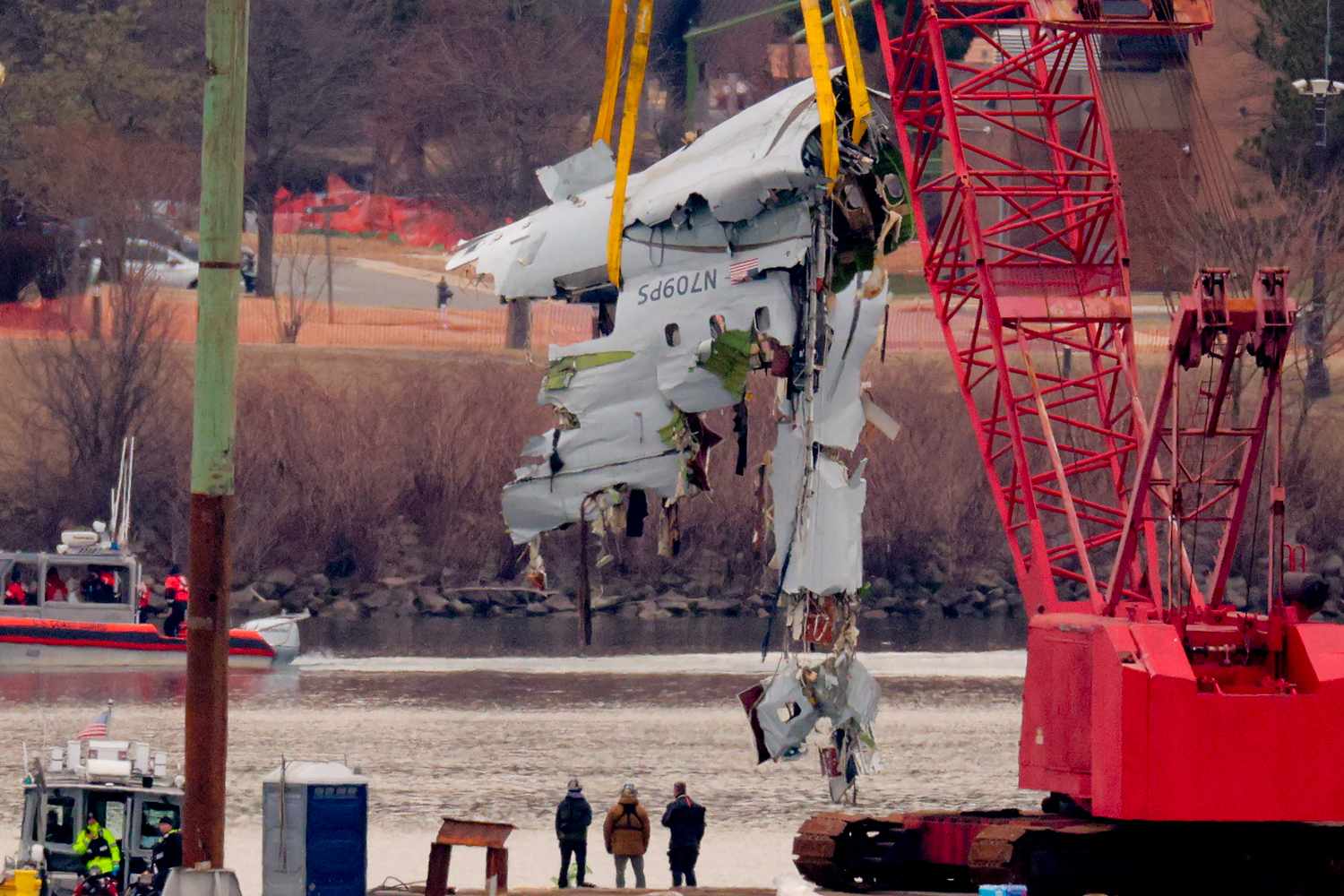Physical Address
304 North Cardinal St.
Dorchester Center, MA 02124
Physical Address
304 North Cardinal St.
Dorchester Center, MA 02124

:max_bytes(150000):strip_icc():format(jpeg)/dc-airlane-crash-1-073025-dbcfeb3af685474ab973fe0fea6c3063.jpg)
Six months after an army helicopter crashed into an American airline passenger plan Near Washington, DC, who killed 67 people, says officials now that the crew in the hacker probably thought they were flying lower than they really were.
It was part of new testimony on Wednesday, July 30. During The first of three National Transportation Safety Board hearings into the disaster Jan 29 at Ronald Reagan Washington National Airport
At the crash, the plane flew to DC from Wichita, can., With A number of young figure skaters on board who had participated in an elite training camp. Black Hawk returned to Fort Belvoir in Virginia after conducting an evaluation of its pilot.
An investigation is ongoing to the decisions and the problems – both that day and broader – which contributed to US deadliest air crash Since November 2001.
NTSB investigators said on Wednesday that part of the army helicopter’s height meter, which helps pilots understand how high an aircraft fly, were incorrect.
The chopper was well over the 200-foot limit in the collision, although it is unclear if the pilot and the crew were aware of it.
They had been separately warned about the approaching jet and approved to maneuver around it in what is called “visual separation”.
According to Wednesday’s hearing, flight data recordings show Black Hawk, which was designed in the 1970s, was actually 80 feet to 100 feet higher than its barometric height meter showed in the collision.
A barometric height meter determines the increase by detecting changes in air pressure.
When the investigators tested three helicopters from the same 12th aircraft battalion as the helicopter that crashed, there were also similar deviations in their height meter.
This difference may have had deadly consequences: Among other questions that night, Black Hawk was very too high in the sky when it threw into the plane.
Never miss a story – register for People’s free daily newsletters Keeping up to date on the best of what people have to offer, from celebrity news to compelling stories of human interest.
According to a New NTSB presentationshown as part of the hearings, the helicopter’s crew had discussed its height during the convicted flight – although deficiencies in the height meter readings could have prevented them from understanding the real danger.
At one time that night, Chief Warrant Officer 2 Andrew Eaves, reportedly, told the instructor on the flight, to Captain Rebecca Lobach, the pilot that was evaluated, to “get down” to 200 feet because they were at 300 feet on the bad chopper.
During testimony on Wednesday, the US Army Manager Kylene Lewis said that a difference of 80 to 100 feet in the readings would not normally have raised her eyebrows and told investigators that she would have used the alternative radar height meter more than barometric height meter at a lower height.
She said she would check both highlights below 500 feet.
“As long as there is no more than a 70-foot fault, the height meter is considered reliable for flight,” Lewis said.
Separately, Scott Rosengren told the Army to the NTSB panel that “the fact that we have less than 500 feet … is a problem for me”, with reference to the amount of vertical space that is intended to separate helicopters and planes at the airport.
Given the risk and in light of the decades old Black Hawk helicopter fleet, Rosengren said that if he was “king” for one day he would retire for the older hackers for new ones.
But Todd Inman, a member of NTSB, struck what he called the lack of importance that the army raised the height -meter issues on its aircraft.
“I hope every army pilot does not have to look at NTSB.Gov live stream to find out if there is a difference in their heights and planes flying around,” he said.
During Wednesday’s afternoon certificate, employees with the Federal Aviation Administration also met with intensive questioning about their handling of the deadly collision, with the NTSB chairman Jennifer Homendy who noted that FAA took six months to send them information about staffing in the air control tower at Reagan.
While he was told by FAA’s acting Deputy CEO of the Nick Fuller business that his agency had shared the “latest and best” information about the crash, was homely disagree – and later accused FAA of abusing the event and failed to take “ownership.”
“You transferred people instead of taking ownership of the fact that everyone in FAA in the tower said there was a problem,” she said. “How do you explain that? Are you kidding me? Sixty -seven people are dead.”
Homendy also urged FAA’s “bureaucratic” processes while questioning FAA Aeronautical Information Services Leadie Katie Murphy about why the agency did not carry out more collision risk areas on their charts.
Points to more than two dozen steps that the agency must undergo to implement a political change, the chairman exclaimed, “fix it. Do better.”
The afternoon part of the hearing also contained an examination of the helicopter flight road next to the airport. FAA Air Traffic Control Specialist Clark Allen testified that helicopters flying around Reagan were expected to maintain its height but with 100 feet of Wiggle rooms.
In response, Metro Aviation’s Rick Dressler, a civilian pilot, cut, to say: “We do not accept a plus or minus of 100 feet in the DCA route structure,” adds, “It’s unacceptable.”
The negotiation showed that helicopter pilots that used road 4-where Black Hawk had flown before the crash in January-Had a roof of 200 feet, but they were encouraged to fly over 100 feet due to noise pollution and left a narrow margin for any mistakes.
After the tragedy, FAA indefinitely limited helicopter flights Near the DC airport in March.
The NTSB negotiation will continue this week.